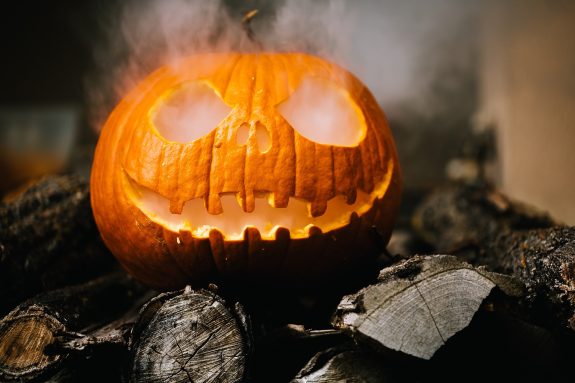It’s spooky season—a time of year when Halloween festivities are underway, and people around the globe enjoy haunted houses, dressing up, and watching horror films. While these activities are just for fun, millions of animals in Canada endure lives of sheer misery, every day of the year. The reality of their pain and suffering is far more terrifying than any Halloween house of horrors. Here are just some of the ways that hell on earth really does exist for animals.
Poisoned by Compound 1080
Just a pinch of this white powder is all it takes to kill. It causes its victims to experience physical and psychological terror from vomiting, severe and prolonged convulsions, and respiratory distress. Symptoms can last hours or even days before a victim ultimately dies due to cardiac failure or respiratory arrest.
Poisons like Compound 1080 are used in Canada to kill wild animals such as wolves, coyotes, black bears and skunks, and can harm non-target species. Animals simply living their lives can unknowingly ingest the poison through baited traps. What comes next is an excruciating death by poisoning—a horrific way to die that no one should ever have to endure.
Trapped in a Gestation Crate

Imagine being trapped in a tiny cage, so tight that you can’t turn around to scratch yourself, or take a few steps to stretch your aching body. Over time, muscle atrophy renders you fragile and immobile. You’re trapped on the hard concrete floor with slates to allow the passing of urine and feces to an underground cavity where toxic fumes of your own excrement rise up, causing respiratory illnesses and lung infections.
It’s not the plot to a horror movie. Gestation crates, otherwise known as sow stalls, are standard practice in Canadian pig farming. Sows often spend their entire adult lives in such crates as they are kept continually impregnated to maximize profitability.
They are so cruel that they are banned or severely restricted in at least nine US states, the UK, and the European Union. Take action if you think they should be banned here too:
Drained of Blood
They call it “red gold”. It’s valuable hormone is found in the blood of pregnant horses, that is used in Canada’s pig factory farms. The horses are roughly corralled, hit, and shoved by workers into a “blood hall” where their necks are punctured and about 10 liters of their blood is drained into plastic buckets. The weakened animals are then sent back out into the fields, with no time to recover.
The cruel process is repeated once or twice per week until they are too weak to continue the process. Then, the horses are abandoned to starve, or are violently killed in a slaughterhouse.
Executed After A Life Chained Outdoors

The acclaimed documentary film Sled Dogs wasn’t supposed to be a horror film, but it reveals that dogs in the dog sledding industry are frequently chained outside in all weather extremes when they are not being forced to pull sleds. They are forced to eat, sleep, and eliminate in the same tiny area where they are chained.
Dogs frequently suffer from boredom, frustration, and depression—and when tourism declines and operators generate less profit, they may even be shot to death. In one high-profile case in Whistler, B.C., a dog sled operator shot 100 dogs, execution-style, in full view of one another, and dumped them into a mass grave.
Ontario does not regulate the sled dog industry, and keeping dogs chained outdoors is legal in the province. Please tell Ontario Premier Doug Ford and Solicitor General Michael Kerzner that these dogs deserve better than a life of misery on the end of a chain!




